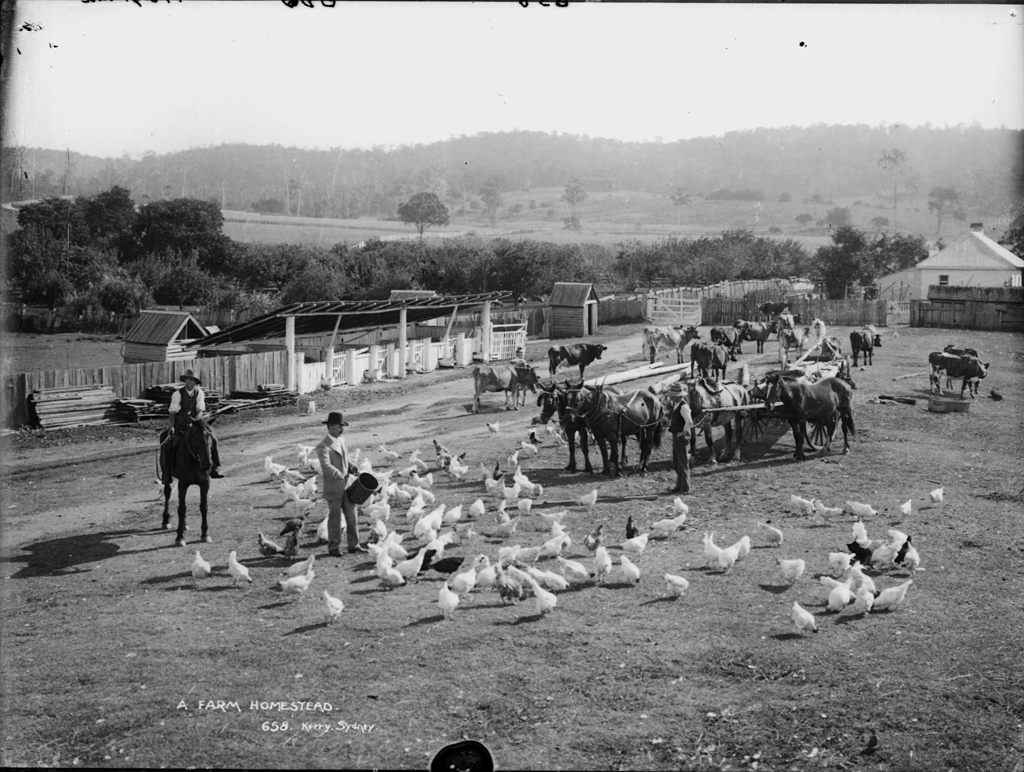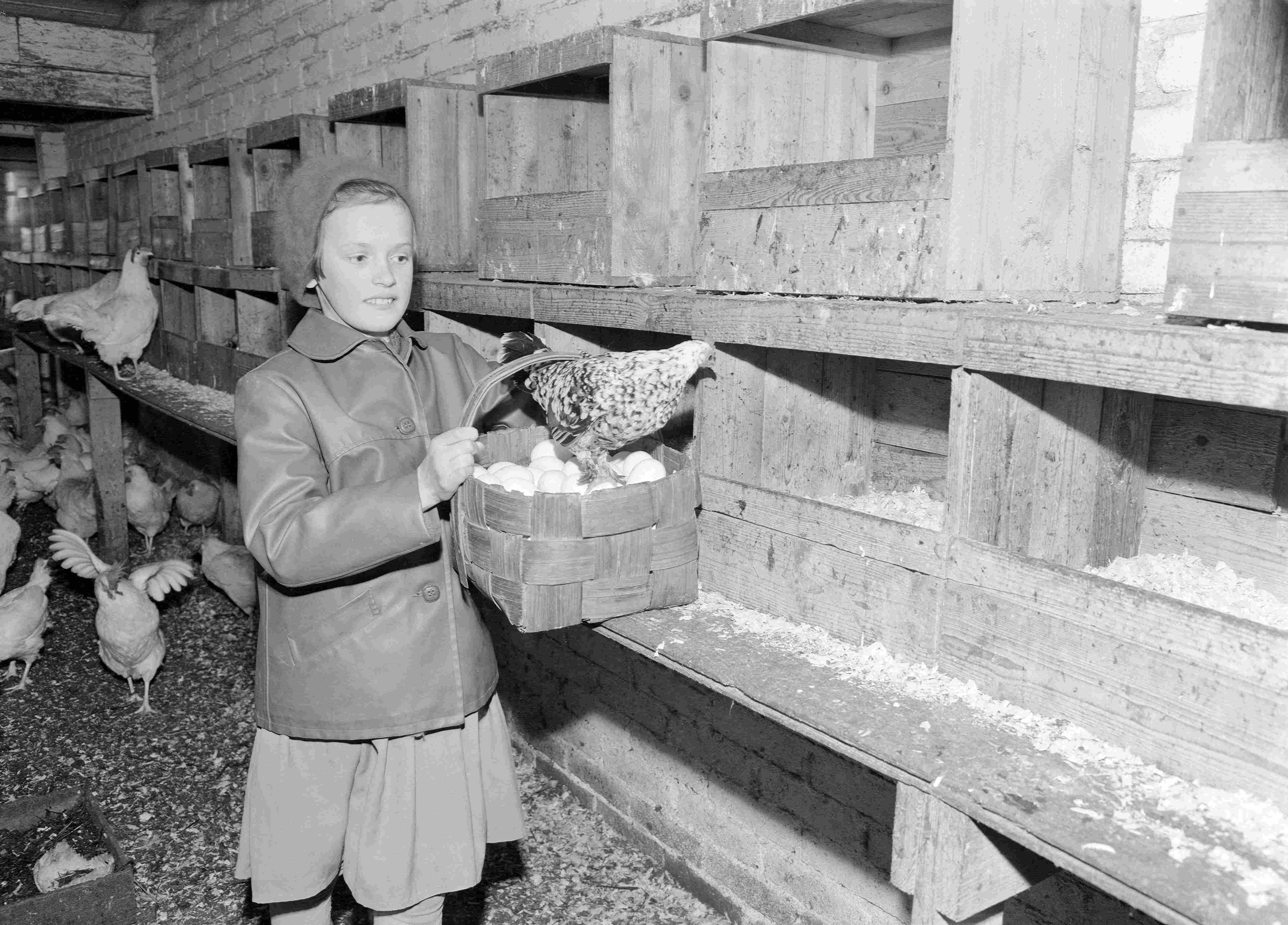
A farm homestead (ca. 1940s) - Source: Wikimedia Commons
About Hatched Genetics
Our Mission
The poultry industry faces significant ethical, economic, and environmental challenges due to inefficient breeding practices. The industry currently produces approximately 7 billion male chicks per year that are culled immediately after hatching, leading to massive waste and ethical concerns. In this, the so-called Rooster Problem, billions of dollars are lost in chicken productivity, unnecessary resource consumption, and a growing public demand for humane and sustainable poultry solutions.
Additionally, poultry remains one of the largest contributors to agricultural emissions, requiring feed, land, and water resources that could be used more efficiently. As climate change increases the pressure on global food systems, there is a need for scalable, sustainable poultry production that reduces waste and improves efficiency without compromising animal welfare.
We believe that genetic engineering in farm animals is the future of artificial selection - one day in the near future, instead of breeding for traits, we will simply engineer them. Genetic engineering is faster and less expensive than artificial selection, and it allows us to select for unobserved traits, an impossibility using existing selection.
In this, our mission is clear: We are making poultry production more ethical, efficient, and sustainable.
- For food producers: Save billions annually by eliminating wasteful male chick production and improving feed efficiency.
- For consumers: Sustainable, humane poultry raised with advanced genetics for disease resistance and minimal environmental impact.
- For regulators & policymakers: A solution that meets global animal welfare standards and reduces the footprint of poultry farming.
Our First Trait: Lady Layers
The first poultry industry concern that we will tackle with genetic engineering is the Rooster Problem. When breeding laying hens, rooster chicks are not economically viable and are culled immediately after sexing at one day old. In the US, over 350 million such chicks are culled every year, raising ethical concerns about industry practices. Moreso, culling of all chicks hatched means that every breeding hen is only working at half efficiency, causing substantial profit loss and creating undue environmental impact.
Our Lady Layers are breeding hens that will only lay female chicks. This will eliminate the need to cull rooster chicks. Every breeding hen will also produce twice as many usable offspring, effectively doubling their value.
Although various alternative solutions have been proposed to better handle the rooster problem, every existing attempt deals with eggs after they have been laid through various in-ovo sexing techniques. Importantly, post-lay sexing does not recoup any value lost due to hens laying rooster eggs, it only eliminates the need to cull chicks after they hatch. Alternate sexing strategies also require bulky machines and personnel overhead that create additional costs. Our solution is unique in that it resolves the rooster problem before the egg is laid, addressing not only the ethical concerns of the mass culling of chicks, but also creating a massive economic benefit since Lady Layer hens produce twice as many viable chicks using the same resources as standard breeding hens.
Our Approach
Our proprietary chicken genetic engineering platform allows us to engineer any desired trait, such as our Lady Layers trait, into chickens using computationally guided trait design. We first generate Blank Slate surrogate chickens to host our genetically modifiable embryos, then a treatment-based genetic construct is inserted into the embryos to create Lady Layers in a single generation. Treated hens will produce only female offspring; untreated birds can be bred to pass on the genetic modification.
Our Lady Layers can be slotted into existing breeding infrastructure the same as any other chicken genetic line. Future generations of Lady Layers can be bred by mating untreated hens and roosters, and treated Lady Layers will produce only female offspring. Because of the design of our genetic construct, pullets from treated Lady Layers and their eggs will not be genetically modified, which will alleviate customer concerns about genetically modified foods.

Girl in a chicken farm (1961) - Source: Wikimedia Commons
Contact us
Contact us to learn more about our work, inquire on partnerships, or just to say hi.
Oh, who that ever lived and loved
Can look upon an egg unmoved!
Clarence Day

 Hatched Genetics
Hatched Genetics